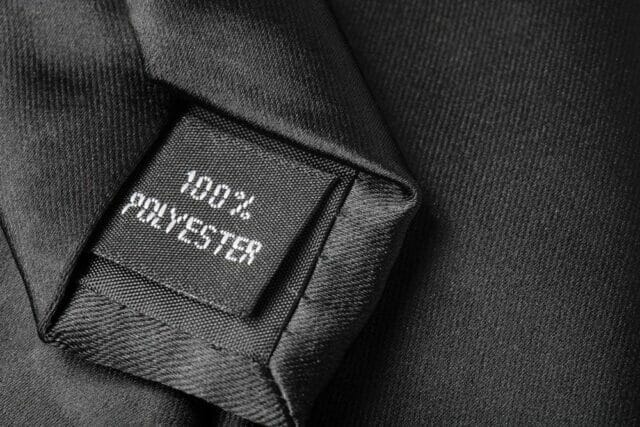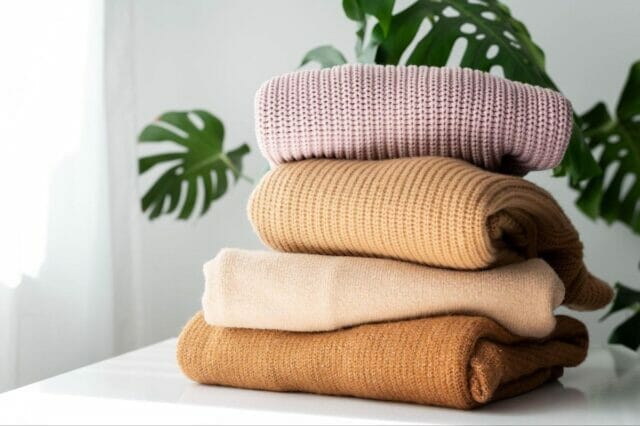
Many people outside the fashion industry may not have heard of it, but the Higg Index sustainability rating system has been used by big fashion brands for years to help them self-assess their sustainability and set goals for improvement.
While the Higg Sustainability Index has been in use for over a decade, today, the famed rating system is facing a controversy.
In June 2022, allegations emerged that the Higg Index is simply a complex form of greenwashing that prioritizes fossil fuel-based synthetic materials over natural textiles. Is this critique true? Is the Higg Index still a useful measure of sustainability? Let’s dive into the controversy.
In this article, we’ll explore what the Higg Index is, why it’s currently the subject of criticism, and how the Index may change in the future to ensure the pursuit of true sustainability in the fashion industry.
What Is the Higg Index?
The Higg Index, created by the Sustainable Apparel Coalition (SAC), was first introduced in 2011. According to the SAC, the Higg Index is “a suite of tools for the standardized measurement of value chain sustainability.” In other words, the Higg Index creates a set of standards to help measure the social and environmental impacts of a clothing product’s complete lifecycle, from production of raw materials to distribution and even to disposal.
The Index takes into account impacts like water use, labor conditions, and carbon emissions throughout the value chain. Essentially, companies can use the Higg Index to evaluate how ethical and eco-friendly their practices are.
Interestingly enough, the Higg Index was first introduced through an unlikely partnership between retail-giant Walmart and outdoors brand Patagonia. Walmart first sought out Patagonia, a famously sustainability-minded company, when they invited Patagonia’s founder, Yvon Chouinard, to speak on sustainability at a Walmart conference in 2009.
This eventually led to a strong partnership between the two companies, based in the belief that large companies are in a unique position to reduce the environmental impacts of the fashion industry. This partnership led to the creation of the Sustainable Apparel Coalition in 2011, and the Higg Index was born.
Since the Higg Index’s introduction, many major brands have joined the coalition. This Higg Index is used today as a self-assessment tool that is mainly aimed at helping large brands reduce their environmental impacts, although many large brands choose to use third-party audits to verify their own compliance with Higg Index standards. Among the biggest clothing manufacturers and retailers to obtain Higg Index verification are Nike, Amazon, Target and Walmart, although many other well-known brands are also members of the SAC.
The Controversy: Does the Higg Index Favor Fossil-Fuel Based Fabrics?
Recent criticism of the Higg Index, voiced by New York Times reporter Hiroko Tabuchi in June 2022, focuses on the Higg Index’s rating of fabrics. Critics argue that the index favors synthetic materials over natural fibers.

Traditional synthetic fabrics like nylon and polyester are made from fossil fuels, making them a big contributor to climate change. For example, polyester releases 9.52 kg of carbon dioxide emissions per ton of spun fiber, compared to only 2.35 kg for organic cotton grown in the US. These numbers don’t even take into account the fact that polyester and other synthetic fibers are much more difficult to recycle.
However, the Higg Index rates polyester and other synthetics as very sustainable. This may be because the index relies on studies sponsored by (you guessed it) synthetic fabric producers. The studies the Index relies on are also focused on polyester production in Europe, in countries that likely adhere to stricter environmental pollution standards than Asian countries, where most polyester is made.
Finally, these sustainability ratings may be skewed simply because of a lack of consistent data in the fashion industry. In other words, it’s not that the Higg Index was created to be skewed, it’s just that we don’t have a clear understanding of the environmental impacts of clothing production in the first place.
An article from GreenStory argues that at its core, the controversy over the Higg Index is a “data problem,” as companies around the world base their sustainability claims on data that’s only an estimate, if not entirely lacking in credibility. They give the example of a cotton t-shirt, for which we have only a very broad estimate of how much water it takes.
For example, Planet Tracker notes that sources cite the water consumption of a cotton t-shirt between 600 liters and 7000 liters… leaving a lot of room for error. When we base sustainability claims based on such vague data, there’s bound to be some issues.
These ratings based in bad data have allowed some major brands to continue relying on fossil fuels and polluting water-ways during production of synthetic fabrics, all while saying that their brand is sustainable. For example, fitness-wear giant Gymshark advertises their use of the Higg Index to achieve their environmental goals.
According to the company’s 2020 Transparency Report, Gymshark wants “the creation and distribution of every Gymshark product to have minimal repercussions on the planet and its environment.” However, most of their products are made from fossil-fuel based fabrics like nylon or elastane.
The SAC Response
The SAC denied claims of “favoritism” of synthetic fabric, stating that the data behind the Higg Index is standardized and accurate. However, this has not stopped producers of natural materials like silk and leather, both of which receive much lower ratings on the Higg Index, from coming forward with skepticism.
In fact, several of these groups have been complaining to the SAC since 2020, arguing that the Index is unfairly (and inaccurately) skewed towards synthetic materials. While it’s true that many natural materials like leather do have environmental consequences (for example, the raising of cattle is quite carbon-intensive), many argue that synthetics are not that much more environmentally-friendly.
It’s important to note that the Higg Index also includes standards for social, not just environmental, practices in the fashion industry. These standards for ethical labor are known as the Higg Facility Social & Labor Module.
Updating the Higg Index: Moving Towards Sustainability in the Fashion Industry

Four days after the New York Times article was published, the Norway Consumer Authority (NCA) issued a statement banning brands from using the Higg Index to make environmental marketing claims. In their letter to the SAC, it’s revealed that the NCA met with the SAC back in May 2022 to discuss their concerns that Norwegian company Norrøna and H&M were using data from the Higg Index to make misleading marketing statements to consumers.
In response, the SAC has suspended the consumer-facing portion of the Higg Index while they perform a review. For now, online retailers and individual products will no longer sport the Higg Index seal or scorecard.
The SCA’s goal is to “better understand how to substantiate product level claims with trusted and credible data.” The Higg Index standards are still available for brands to use to verify their sustainability – they just can’t advertise this to consumers.
As the Higg Index is reevaluated, what do fashion brands want to see going forward? First, we should note that the current Higg Index is still a useful method of getting the fashion industry to self-evaluate, even if the method of evaluation needs tweaking. After all, some focus on sustainability is much better than nothing at all.
The biggest question for the future of sustainable fashion is what metrics will be used to rate the sustainability of various fabrics. Where will that data come from? And will it be part of the Higg index?
Coming Next: Legislation to Regulate the Fashion Industry
Of course, the Higg Index is not the only set of standards that may govern sustainable and ethical practices in the fashion industry in the U.S. There has been a recent slew of legislation focused on improving transparency and accountability in the fashion industry when it comes to retailers’ and manufacturers’ environmental and ethical impacts.
For example, in May 2022, United States Congresspeople Sen. Gillibrand and Rep. Maloney introduced a bill entitled, Fashioning Accountability and Building Real Institutional Change (FABRIC Act, S.4312). The FABRIC Act aims to improve working conditions and ensure fair wages in the world of apparel production in the United States, and represents just one of many new regulatory actions across the country that focus on bringing more regulatory oversight to the fashion industry.
While the FABRIC Act is focused mainly on achieving fair treatment of garment workers, other government initiatives (both in the US and worldwide) have also been started to evaluate adherence to sustainable practices in the fashion industry. For example, the U.S. Federal Trade Commission is currently updating its “Green Guides,” a set of rules that aim, in part, to evaluate green marketing claims and hold companies accountable to environmental standards.
In addition to increasing government focus on making fashion more ethical and eco-friendly, we also have plenty of other standards that push for social and environmental responsibility in garment manufacturing. For example, SA8000 is a set of criteria that push companies to go above and beyond in their social compliance.
GOTS, the Global Organic Textile Standard, sets requirements for organic textiles, including both ethical and ecological practices. So, while we can expect a revised Higg Index in the future, it will not be the only set of standards that pushes the fashion industry towards a more sustainable, ethical future.
What Tools Can Consumers Use to Find Sustainable Fashion Brands?
The Higg index, as well as the other tools mentioned in this article, are designed to help fashion brands be more ethical and sustainable. They are not intended or designed to help consumers.
So what can consumers do to find sustainable fashion brands? Eco-Stylist’s sustainable brand criteria is a tool designed to help consumers find sustainable clothing brands.
The research evaluates fashion brands on 3 main categories: transparency, fair labor, and sustainability. The criteria takes into account any industry certifications a brand has, and a whole lot more.
The result is an easy to use brand directory featuring brands that pass the criteria, and brand ratings that summarize key findings about each of those brands. Try it out and see for yourself.
This is a guest post written by David Evans.

Author Bio: David Evans is a freelance writer covering sustainability challenges and solutions. He writes to help companies and consumers understand the environmental and ethical challenges in products and their supply chains so we can find viable solutions for both.









